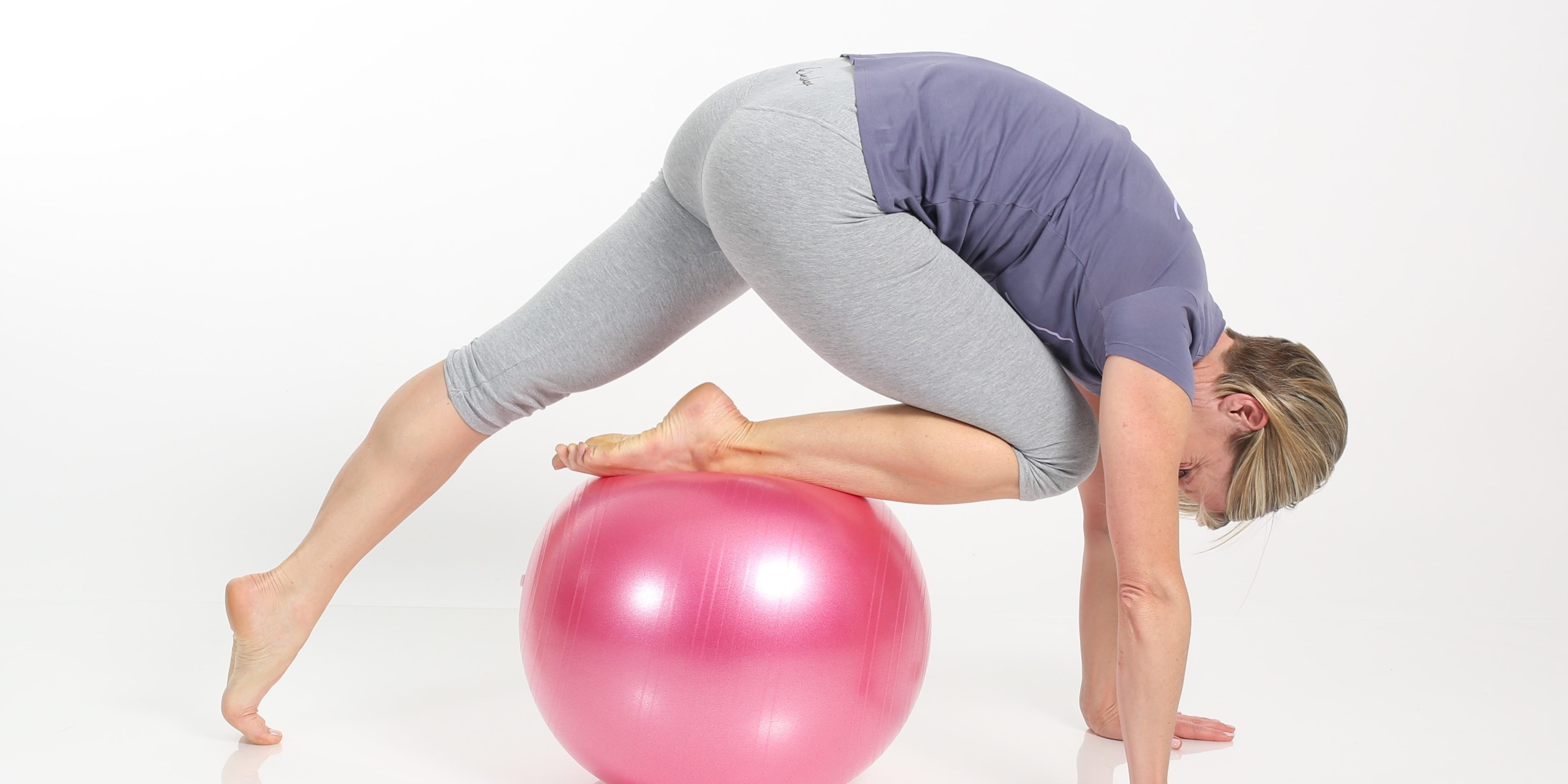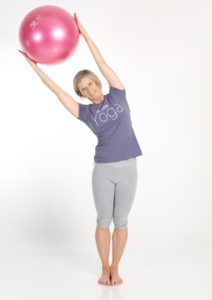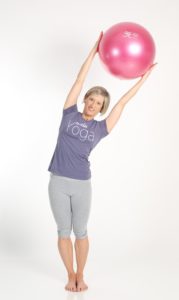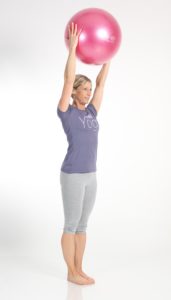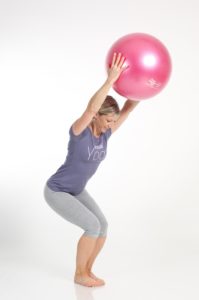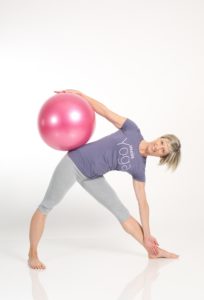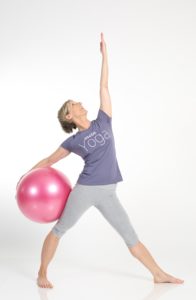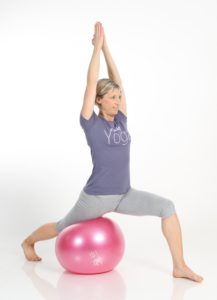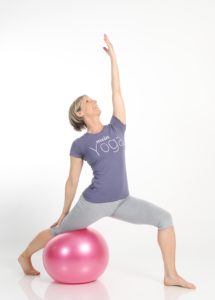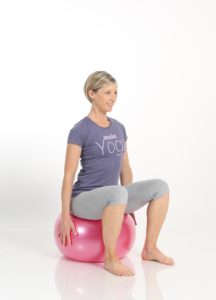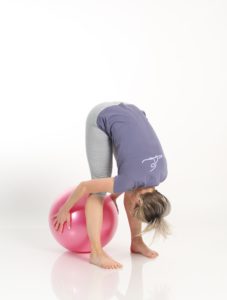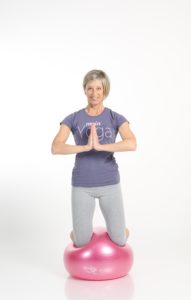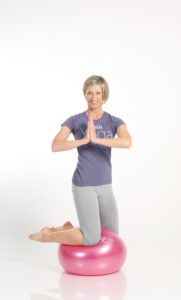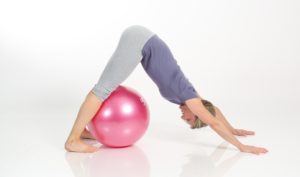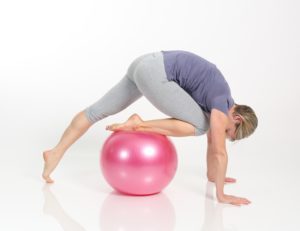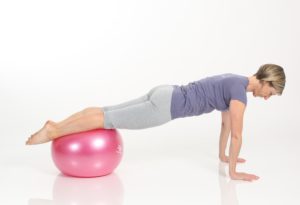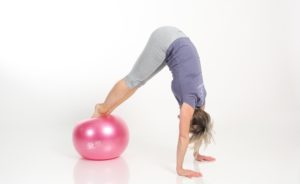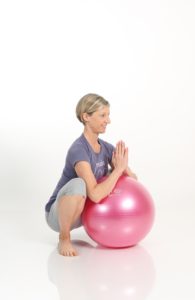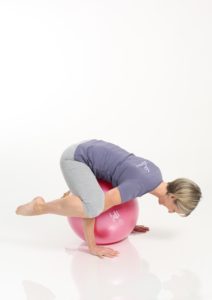Gymnastic Yoga with the Redondo Ball mein Yoga
Our task as trainers is to convey the joy of movement to people in order to make them understand the positive effects of sport in the long term.
The movement concept “mein Yoga” combines elements of yoga and health-oriented training into attractive and challenging exercise units.
Improve stability, balance, posture and body awareness through sensorimotor training.
Mein Yoga
is body related
trains self-awareness
is unagitated,
relaxing,
energizing,
moving
and easy to learn.
Find your center and activate body and mind. The movement concept “mein Yoga” contains elements of classical yoga, modified by harmonious gymnastic sequences.
Therefore “mein Yoga” is a course concept for everyone, simple and challenging at the same time.
The new Redondo Ball brings new incentives and fun to the participants.
The popular and versatile Redondo® Ball mein Yoga in the new size max. 42 cm opens new exercise possibilities for you. So you can integrate flowing gymnastic exercises into your workout, your spinal gymnastics, your yoga or Pilates.
Due to its soft and non-slip surface, the medium-sized gymnastic ball is comfortable to handle and provides security during balance exercises. In addition, its stability makes it ideal for sitting and kneeling exercises and particularly suitable as a dynamic exercise ball.
Support area.
The Redondo® Ball mein Yoga is produced by TOGU in Germany in a fair and resource-saving way. The material is 100% recyclable. It is latex-free, contains no heavy metals and is free of prohibited ingredients. Due to the flexible material it is very resilient (up to approx. 150kg), easy to clean and washable.
Nothing in life is stable, therefore train the unstable!
Training on unstable ground has many advantages! On the one hand you develop balance and stability, on the other hand every exercise becomes a whole body exercise, during which you can train with lower weights and resistances. It is a training that requires concentration and trains reflexes. Through active, balancing muscle work, we optimize our coordinative performance.
The body involuntarily adapts to the unstable conditions and automatically adopts the optimal posture. In the figurative sense, the unstable stabilizes the body, the mind and the soul! That’s why you lose your balance several times a day!
Exercise examples:
Exercise 1:
Closed stand / tree in the wind
Hold the ball over your head. Now with the exhalation move the upper body to the right, inhale again to the middle, with the exhalation move to the left.
Keep the pelvis stable! Per side 8 – 10 repetitions.
Strengthening of the centre of the body, training of the ability to balance.
Exercise 2:
monopod/ tree
Standing on one leg. Support the free leg at the lower thigh. Hold the ball over your head and squeeze slightly. Pull your shoulders low! Each side hold for 30 seconds. Allow the breath to flow.
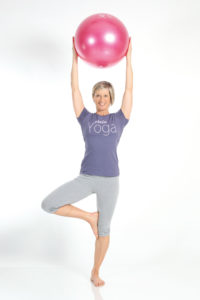
Training of the balance ability, strengthening of the trunk stabilizers.
Exercise 3:
Closed stand/chair
Hold the ball upside down and squeeze lightly. Now lower the buttocks backwards. Keep your back straight! Raise again. 15-20 repetitions.
Strengthening of the leg, buttocks and back extensor muscles.
Exercise 4:
Straddle / triangle
Legs about 1 meter wide open. Now turn your right foot outwards, turn in your left a little. Lower your upper body to the right as you exhale. The pelvis is stable hold it! Press the ball lightly on your left hip. Now raise your upper body again, stretch your right arm towards the ceiling and inhale. Repeat 8-10 times on each side.
Strengthening of the body centre, mobilisation of the hip and shoulder joints.
Exercise 5:
Lunge step/ warrior
Right foot in slight external rotation. The heels are on one line. Place the ball under the right thigh. Close both hands above the head. Now inhale and stretch your left arm towards the sky. This position approx. 1 minute long.
Training of the ability to balance, strengthening of the leg muscles, stretching of the groin, thighs, trunk muscles.
Exercise 6:
Hip width Stand with bent knees
Place the ball on your lap and let your upper body hang loosely over the ball. Hold this position for approx. 1 minute or, if necessary, gently bob your upper body.
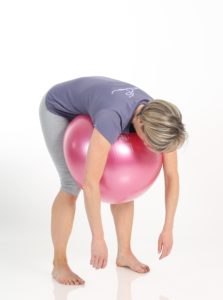
Relaxation of the back fascia.
Exercise 7:
Sit upright on the ball. With both hands the ball from the outside.
Now inhale, stretch your legs as you exhale, and drop the sternum towards the thigh. Inhale, again. Sit down. Repeat this sequence 8-10 times.
Stretching the back of the body, training the ability to balance.
Exercise 8:
Attention challenging! Kneeling on the ball.
Close both hands in front of the sternum. Now exhale to the upper body.
right, inhale to center, exhale to left. Repeat 5-8 times on each side.
Training of the balance ability, stabilization of the body center.
Exercise 9:
Looking down dog. Lean the ball against the lower legs.
Inhale, lift the heels. Now exhale the upper body. Make the upper body round. One knee
and roll the ball forward with the instep foot. Again roll back with inhalation. Exhale both heels back in. Push in the direction of the floor. This sequence with each leg 5-8 times
repeat.
Stabilisation of the centre of the body, stretching of the back of the body.
Exercise 10:
Push-up position with the lower legs on the ball. Hands under
the shoulders, the body forms a line. Now when exhaling the
Push your buttocks towards the sky, stretch your legs and tighten them.
Breathe in and roll the body back into extension.
Training of the ability to balance, strengthening of the body center, the
Shoulder and arm muscles.
Exercise 11:
Sit upright in slightly straddled position/ crow.
Support both elbows on the ball, close hands. Now inhale and use the
Exhale and shift the body weight forward until the toes lift off the floor. The buttocks are the highest point. Hold this position for about 30 seconds.
Training of the balance ability, strengthening of the shoulder,
Wrist and arm muscles, strengthening of the core muscles.
Author: Gabi Fastner

